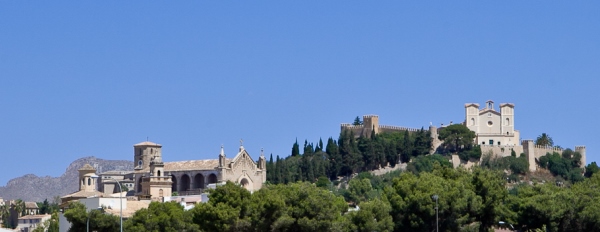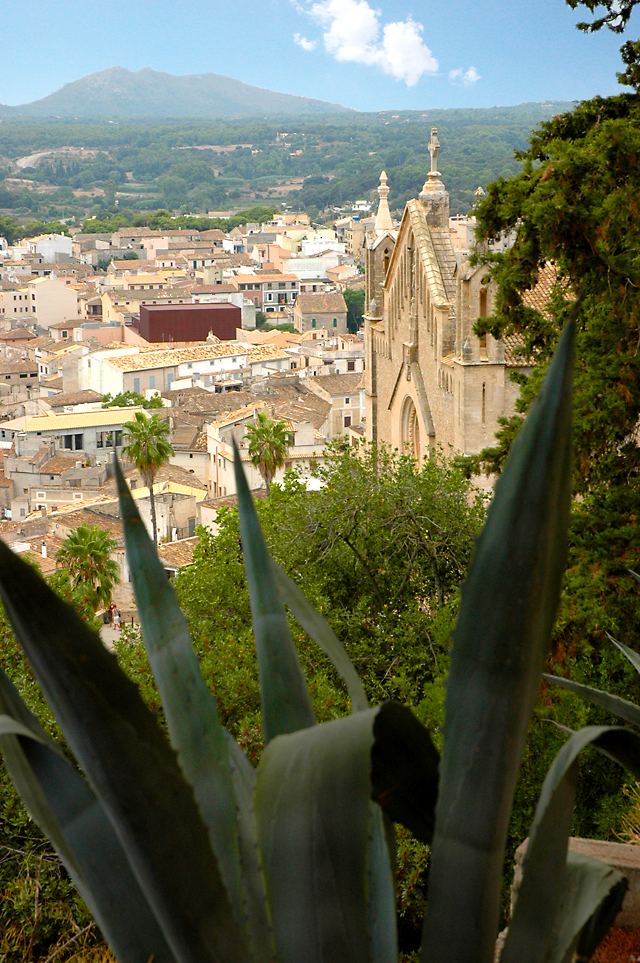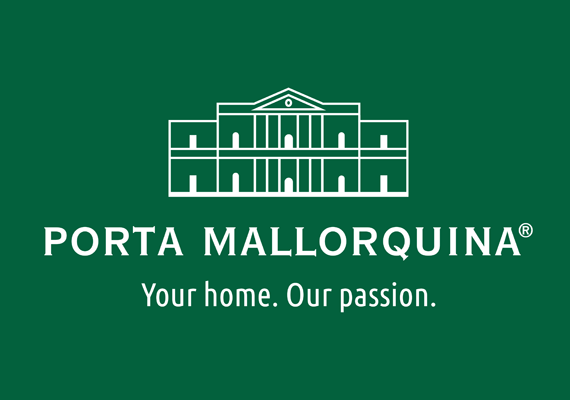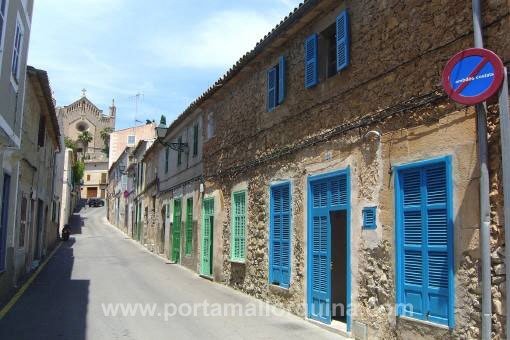On a walk through the centre, through picturesque, narrow streets with their old houses with arched gates and the “Posadas” with coats of arms above the entrances, you can easily transport yourself back to the middle ages. The residents and the town’s government are proud of their historic past and cherish the traditions.
There is shop after shop offering handicrafts here in Artà. The choice ranges from pottery, woven palm baskets and turned artefacts through to delicately styled, coloured glassware. Lots of hobby painters also like to recreate the castle or the bizarrely shaped olive trees in the fields in bright colours.
Fortress against pirates and raiders
Artà had huge historical importance for the whole of the north east of the island. This can easily be recognised today by the castle, still with its imposing wall enclosures, the stunning parish church and the houses in the town with their thick walls and fortified towers. The fact that the town was so heavily protected and defended with walls and towers is due to the regular invasions and pillaging by pirates and raiders up into the 18th century, as vividly and shudderingly described in the local chronicles.
The “Museo Local de Artà” retraces our little town’s history descriptively. The museum, founded in 1927, offers a kaleidoscope of historical highlights and local items for farming use. The oldest finds, namely bronze swords, items of jewellery and burial objects, are evidence of the human settlements in Artá and the surrounding area at the time of the “Talayots”. We can find these stony witnesses with strongholds made of oversized stones, 3.5 metres in height, in a stone forest approx. 1 km to the south east of Artá. This “Talayot settlement Ses Paissers” with a gigantic fortified wall protecting approx. 60 houses was inhabited at the time of around 1300 – 100 B.C.
The treasures from the excavations are displayed in the museum. Vivid documentation in the museum shows that Artà and the surrounding area has been continuously inhabited since the early Bronze Age. Some researchers are even convinced that in the caves under the hill where the castle stands, where human and animal bones have been found, people lived here 1000 to 2000 years earlier than the “Talayot times”.
Artefacts from Roman occupiers
A bronze statue of Mars with a shield and war helmet from Roman times can be found in the “Museo Local”; an outstanding, unique item. We can only find sparse pieces of broken ceramic from the times of the Arabian colonisation when the Muslim “Jartan” was the centre point of the region with the same name. We have told you so much about the history that we now want to take a walk through the town and see how the course of time is mirrored by the buildings, and documented by specific monuments.

The famous pilgrimage church “San Salvador” stands high above the town on the ruins of an old Moorish castle
There is only one way of way of experiencing the beauty of Artà and the surrounding area on foot and it is by far and away the most enlightening solution: to climb up high. We take a leisurely walk up from the main square of Placa Espanya; the large square-shaped town plaza framed by impressive old houses. Before we enter the almost fortress-like parish church “Transfiguración del Señor”, we first enjoy a view over the picturesque town panorama of Artàs. The stately manor houses charmingly snuggle up to the higher positioned church. As reported in the old chronicles, all of the residents in Artá were able to flee to this sacred building when enemies threatened the town. The island’s first bishop, Ramòn de Torella, laid the foundation stone for the parish church in 1248. The old place of worship was erected on the foundation walls of a Moorish mosque. The gothic building was then frequently refurbished and was given its current gothic appearance in 1563. The high altar with the picture of the “Transfiguration of the Lord on Mount Tabor” is particularly worth a look inside the church. The church is named after this picture of the “transfiguration”.
Stations of the Cross en route to “San Salvador”
We now climb further up on the “Calvario”; the Lord’s suffering. After 180 steps, where the stations of the cross are documented in relief images, we finally reach the pilgrimage church of “San Salvador”. The church, which was built in 1832 in a classical style, is home to the wooden sculpture “Mare de Dén de San Salvador” as its most valuable art-history treasure. The sculpture showing Mary with a worried motherly look and the little boy Jesus giving a blessing with his right hand is dated at around 1250 by art historians. It is therefore probably Mallorca’s oldest depiction of Mary.

Breathtaking panorama view from the fortress
The picture showing the submission of Moorish Wali of Mallorca to the victorious Jaume I is less valuable from an art history point of view, but true to history. Worship of St. Salvador goes as far back as the 13th Century and was celebrated by Catalonian conquerors in a small shrine, which was later turned into a large pilgrimage church.
A Moorish castle originally stood on the castle hill. “Almudaina” is the Arabic name for a fortress or castle. There is nothing left of the old Moorish castle nowadays; just a sizeable 1 metre thick parapet and several towers remind us of the times when people had to defend themselves behind the walls.
The view from the battlements and the towers (14th Century) over Artà, the “Sierra de Llevant” mountains and the far-away east coast is enchanting and overwhelming.

